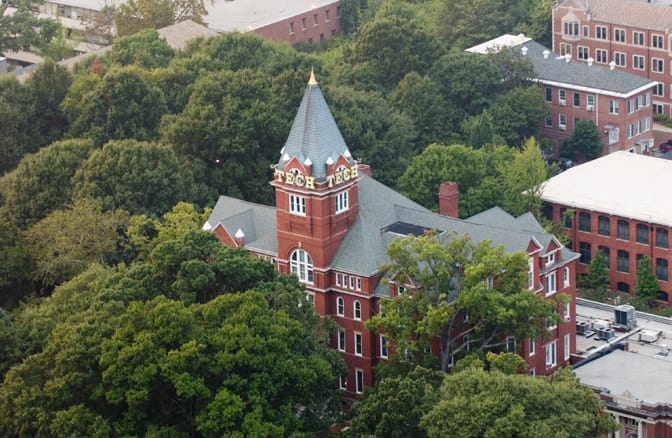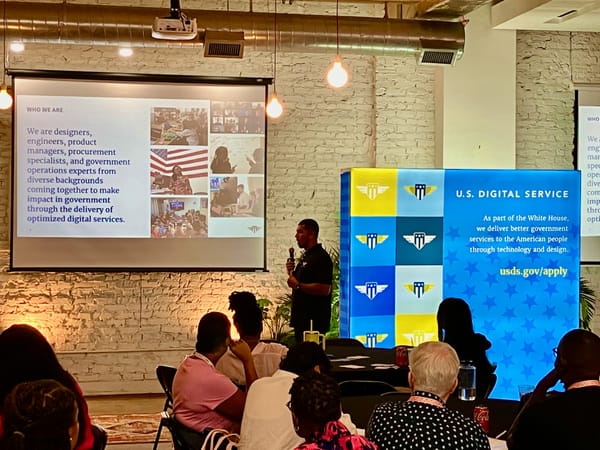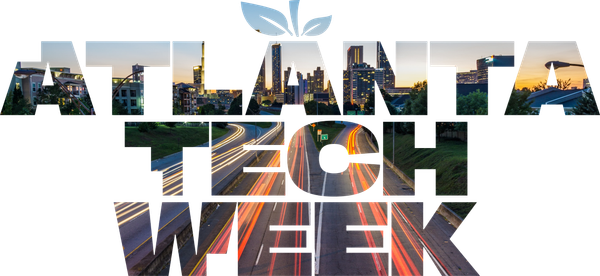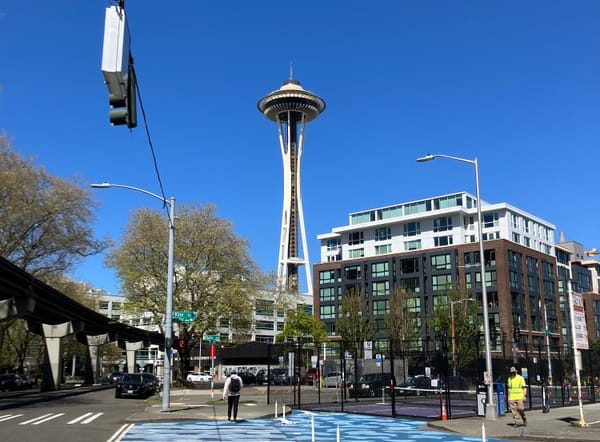Georgia Tech's New Open Source Program Office
Georgia Tech has a significant history of participation in open source and recently boosted it with a new Open Source Program Office.

In the fall of 2023, Georgia Tech received a grant from the Alfred P. Sloan Foundation to create an Open Source Program Office. In this week's issue of Open Source Atlanta, we caught up with Eric Sembrat for a Q&A about open source at Georgia Tech. Eric is an advisory board member of the new OSPO and a long-time advocate and participant in open source software initiatives.
Let's start with your career journey up to your current role at Georgia Tech:
For the last 13 years or so, I've been focused on web development and open source software usage in higher education here in the State of Georgia. I started my career at Kennesaw State University working as a web developer and then as a project manager for their central IT, focused on web development solutions using Drupal as their primary content management system. I then moved to Georgia Tech in 2012 and have spent the better part of what's now 12 years focused in that space.
I'm a Georgia Tech graduate, so it was a bit like coming home. For me, I came into an ecosystem of using Drupal as the open source content management system, so quite familiar. I've spent the last 12 years or so focused on a couple of aspects: building a community of practice for our Drupal content management system and the knowledge-set there, and then honing in on my expertise as an open source developer.
I was an advocate for contributions back to drupal.org on behalf of Georgia Tech and for the work that I was doing, encouraging others to do so, and building out leadership and process throughout our organization.
Then about a year ago, I made a shift from web development into educational technology. Educational technology is what I received my doctoral degree in at Georgia State University, so it was a natural fit, and I'm focused on educational technology advances and innovations for the future of higher education. Generative AI fits in that realm. Open and digital credentials fit in that space, and then we're focused on educational innovations toward fundamental change in higher-education.
I'm currently working as a researcher for the Center for 21st Century Universities, as part of Georgia Tech's Division of Lifetime Learning. We're looking to codify and then expand what it means to be a learner across your lifespan through professional development beyond that traditional academic route of undergraduate degree, graduate degree, a master's and doctorate.
Fortunately, it still keeps me near my roots, so I still work with web development more on the strategic side nowadays, and it allows me to focus on some fun new areas.
As an example, I'm an advisory board member of Georgia Tech's newly established Open Source Program Office, and I've been a huge advocate of getting more codified standards for open source best practices and contributions for my organization. We consume or contribute to open source projects all the time, and having some well-defined process for that helps not only our staff, but graduate students, faculty, students in our organization across the realm.
I can vouch for your contributions. I actually ran across you in the Drupal issue queue a couple weeks ago, looking for some solutions on an issue with a module.
It's the gift that keeps on giving. I was added as a contributor to a project yesterday (March 2024) that I had requested about two years ago for a Drupal 9 compatibility issue. Just one of those surprises you get once you move on from a particular project.
The new Open Source Program Office was announced late last year and is really exciting. How did it get started and how has progress been thus far?
Our open source program office started out of Sloan Foundation's seed funding. Mainly it's to centralize the best practices usage and policies around open source software distribution. This model allows us to collaborate and network with academic peers and similar institutions to address similar problems.
We have been spinning this up pretty intentionally, focused on the research arm: looking at faculty research and student research. The lens that I take is as the voice of a staff member, knowing that for our IT and IT-adjacent services, there are explicit needs for open source practices, policies and procedures that fit within the work that we're doing. Nowadays in the modern age of web and app development, there is a big scaffold of open source tools and projects that underlie a lot of the platforms that we're using, and we find ourselves working to fill that gap as, in this case, a public institution working on a problem working on it for all of our use cases across the ecosystem.
Having that sort of foundational best practices for us to leverage for those contributions to make sure that we respect the intellectual property and copyrights of our organization and also build a community of practice to, for example, teach our upcoming graduates and computer science students about the value of open source simply because it is deeply embedded in so much of the software we use today.
How does a university OSPO differ from a corporate OSPO?
I'm going to give you my best guess. My career is almost entirely within the higher-education space, so I'll give you that perspective from what it means from a public university institution, and then we can make those connections to a corporate equivalent.
For a public research institution, largely a lot of our research fits within a group of faculty with a research center or laboratory. For those experts to have the skill-set, prior knowledge, and time to understand open source best practices, how to work through different licensing, and to properly ensure that their code is distributed and maintained for future usages (or at least, providing that outlet to do so) is a non-trivial task.
The Open Source Program Office serves as that central point for projects that focus our work with open source tools to provide an outlet for guidance and best practices toward the best ways of contributing and to being sure that it's done sustainably in the future. Additionally, there is immense value in providing resources and support for complex processes like project licensing and training.
Because Georgia Tech has the College of Computing and quite a number of computing disciplines, that's a large population of students and faculty who can benefit from that support. Our adjacent schools and colleges commonly work in interdisciplinary research that interfaces with open source technology for the projects they're working on. The reach of open source goes beyond the computing discipline and really, across our academic ecosystem.
What are some of the most widely-used open source projects across campus, Drupal is one but what about others?
Georgia Tech has a decentralized web content management system. That means that folks can use really whatever service they want. The university provides a theme and feature functionality for Drupal, which makes it the primary content management system for many use cases. It is open source, so we as an organization both contribute to and take contributions from for the work that we do. We use WordPress as our secondary content management system. That's used largely for specific, smaller-scale use cases. Open source software is presently across our ecosystem, from research to analytics, from generative AI to our cloud hosting services. Open source technologies feel ubiquitous across the IT sphere.
With generative AI, I think it's interesting right now because there's some focus on more open source data models, ones that have more transparency, less corporate opaqueness and more democratized transparency, to leverage those tools as-needed on projects That allows us to do some more exciting experimentation and focus on exploring that space for the various use cases without being locked into a vendor contract or a paid model. We can explore it in that purely academic research playground to understand how it works and to use it safely and ethically.
That's interesting. Are there specific projects or libraries within the generative AI space that are examples of the use cases you're talking about?
I think it's largely the large ecosystem of AI. I think a lot of our faculty and graduate students use Hugging Face as a starting point for examining various generative AI models and then determining what's the best fit for projects. We also have some centers and labs that focus on the creation or shepherding of these models. We have a Teachable AI lab, AI-ALOE focused on adult learning, and AI centers embedded across all of Georgia Tech’s Colleges
So for my team focused on university innovation, we're focused on finding a smaller scale large-language models that can help us with research for the future of higher education. One area we’re examining is reviewing applicant data and looking at, for example, the essays that they've submitted, and auditing them for leadership traits or 21st century skills to understand the soft skills that might hone in for certifications and success at Georgia Tech and after they graduate.
What first got you into open source? What motivated you to contribute and participate in the communities?
That's a good question. My first contributions and exposure to open source largely was when I was poking around technology during 2004-2005 when I was 15 or 16 years old and I came across WordPress as a website builder. I moved from using software like Macromedia's DreamWeaver to using a content management system. As a teenager I really didn't have a good thorough understanding of the theoretical concepts, but it served as a teaser for me to re-envision what the web experience could look like.
My undergraduate degree at Georgia Tech was in computer science. A lot of modern open source software was still in its infancy, but I got to play with a lot of open source tools during my time across various programming languages and use-cases. I used open source IDEs, I built GameBoy color games we tested in an open source emulator, and got to explore early open source integrations prior to the explosion of Web 2.0 paradigm shifts.
I graduated during the Great Recession, so I explored a few gigs to find my real fit. I was hired initially at Kennesaw State University as a Moodle developer. Moodle is an open source learning management system and Kennesaw State University leveraged that for professional development and in specific instructional use cases where their primary learning management system didn't fit the bill. It was a secondary use case where faculty could be more experimental and have more exposure to modern or experimental teaching experiences as the learning management systems matured.
My first contributions mainly came as part of a Drupal developer looking through the ecosystem. Why? Because Drupal's ecosystem innovated to sort of be a one-stop shop for contributions and issue tracking outside of GitHub (before GitHub and other revisioning software really took off in popularity).
So drupal.org served in that ecosystem as a starting point to understand the value of contributions and working through a decentralized unit of ownership across time zones, countries, cultural and ethical differences and how to collaborate with others across the globe on creating tools.
That experience fits as a staging ground for what my current role does. My team focuses on development of a digital credentials platform for an Open Badges standard and Verifiable Credentials working spec through the W3C, and we contribute to repositories on behalf of other institutions with the Digital Credentials Consortium. We’re in effect building the future of badges and credentials.
As Drupal proliferated, those contribution best-practices really served me to understand how to communicate with a wide array of audiences and how to create technical documentation and the testing and QA to help diagnose problems properly, such as with the integrations with CKEditor 5 and Layout Builder on modern Drupal installations
It has allowed me to evolve from a passive bystander of someone who took patches and contributions and applied them back to my project, to one who was more active and facilitating good contributions and keeping abreast of good practices and understanding the ecosystem. And, most importantly, carrying those best-practices across to other ecosystems and communities-of-practice to let it flourish there as well.




